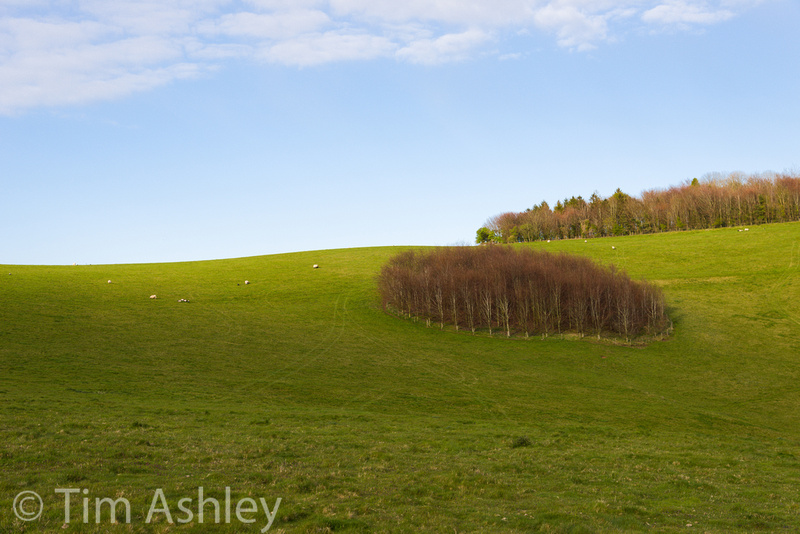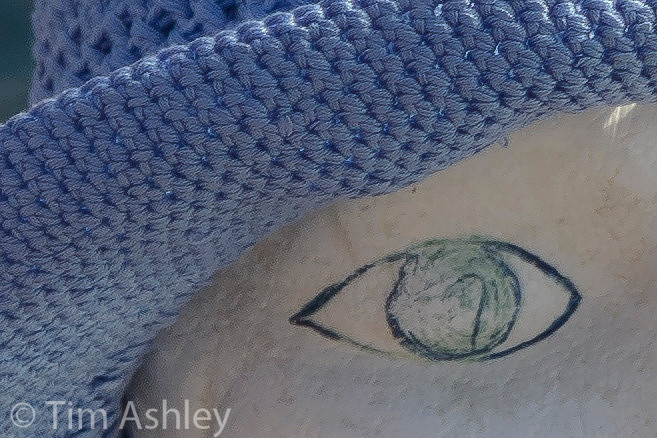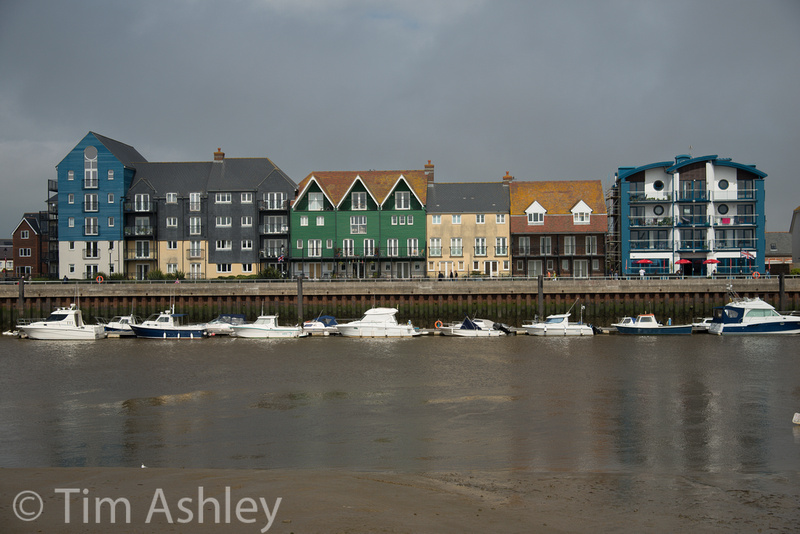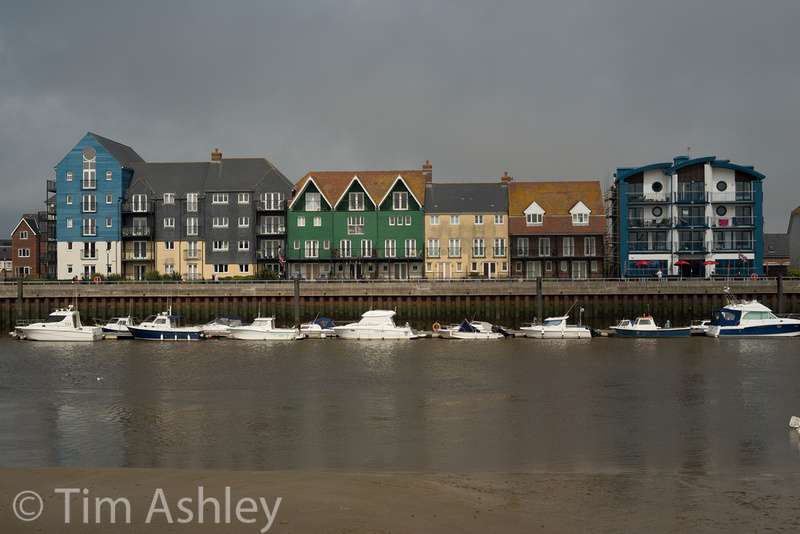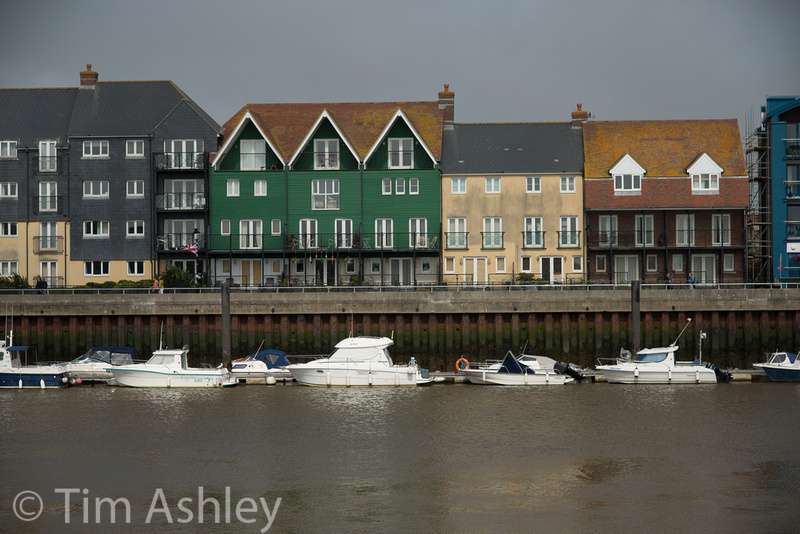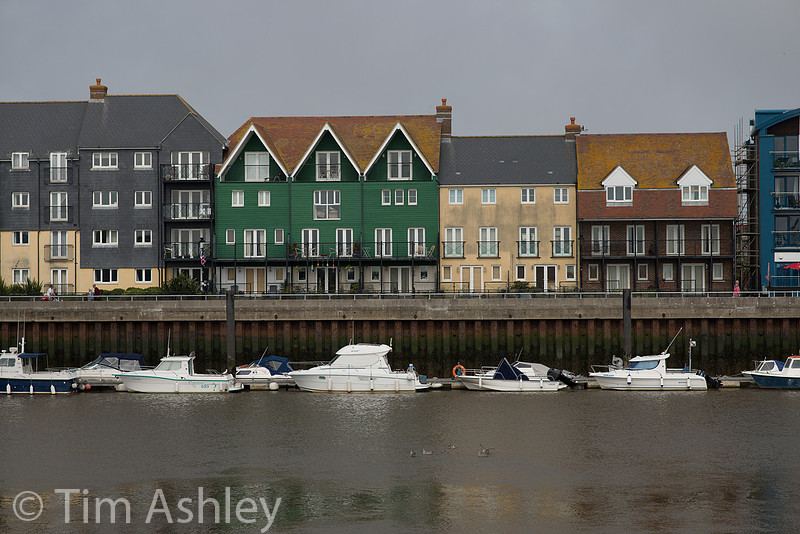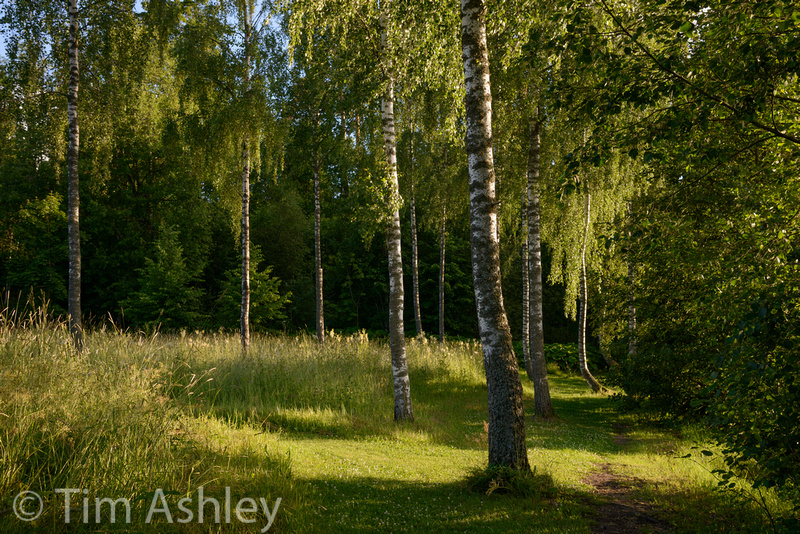24-120 F4G VR on D800E: Mid range to PortraitThe mid-range of a mid-range zoom often gets overlooked: it is tempting to use these tools at the widest and most telephoto ends of their range. But they must perform well as "standard" lenses (ones which roughly match the magnification of the human eye) and as portrait lenses (classically, around 85mm in Full Frame terms). Many such zooms also hit their peak performance in this range too, so it is useful to know that in advance in case you really want to maximise quality. 24-120mm at 52mm F8
24-120mm at 85mm F4 showing pleasant bokeh wide open
100% Crop from above, focus on brim of hat
For the sake of brevity: there's nothing in terms of vignetting, CA or fringing that can't be dealt with pretty well in post production in this range of the lens's operation. And though pincushion distortion is clear at 50mm and worse at 85mm, I don't see anything that doesn't correct. Not ideal of course, but this lens is a series of compromises with a purpose. Does it meet that purpose? I tested against two absolutely stellar reference lenses: the Leica 50MM F2 R Cron and the Nikkor 85mm F1.8G in order that you can see what you are 'losing' when you exchange prime quality for zoom convenience.
The scene, as shot on a D800E using LV, LVAF (but checked at 100% on screen), 3 Second Delay, Gitzo 3 series CF tripod and Arca Cube. This is the same test scene as before: and rather than post crops that you might not think are representative, click on the image itself to get a 100% sized file at 91% JPEG quality in Adobe RGB. It was processed in LR4 with sharpening at 90/0.7/70/20 and with lens corrections ON but no corrections for vignetting or for CA or fringing. Import Profile was Adobe Standard. I advise that you try to look at it on screen at a resolution equivalent to around a 200 DPI print. On most existing monitors that means 50% zoom but on a Retina Macbook display it is 100% though you may want to avoid that for now, unless in Aperture or iPhoto, since other photo applications are not yet Retina optimised.
First, at 50mm 24-120mm at 50mm f5.6
Leica 50mm f2 R Cron at f5.6
This is odd, because it is nearly always but not quite always weak on the right. That implies either a slightly loose element, or some problem with VR 'parking'. I will cover that second possibility in a later post on the use of VR with this lens but I should mention here that these shots were taken without VR but that the weak RHS is usually evident whether VR is used or not.
Moving on to the portrait range, at 85MM. Here I chose the Nikkor 85 f1.8G as my reference. Let's see how they compare. 24-105 at 85mm F5.6 85mm F1.8G at F5.6
On centre, there's not a great deal in it: the prime lens has slightly better micro contrast. Otherwise you are getting no real compromise here by using the zoom. Pretty good. The same is not quite as true on the left hand edge. The zoom is a touch softer but is still pretty impressive. And even more amazing is that when I look into corner crops of other comparison shots, the zoom is far closer to the prime than I would expect. And this is a very, very good prime. My conclusion is that, assuming I can get mine fixed so that the RHS is as good as the left (or assuming that you can buy a good copy) then this lens succeeds in delivering great quality compared to very good primes at F5.6 in this focal length range - and offering more convenience albeit at a less attractive maximum aperture. As a p.s... people often assume that these workman-like zooms are rather prosaic in character and that you have to go elsewhere for a 'look' lens, but I quite often find with this zoom that it has nice '3D pop' on the D800. Here's an example at f9 and 40mm. The very gentle rolloff into OOF given by the small aperture helps, as does the nice lighting, but this slightly boring shots doesn't look like it was taken with a boring lens...
Coming up: the Telephoto Range. |

